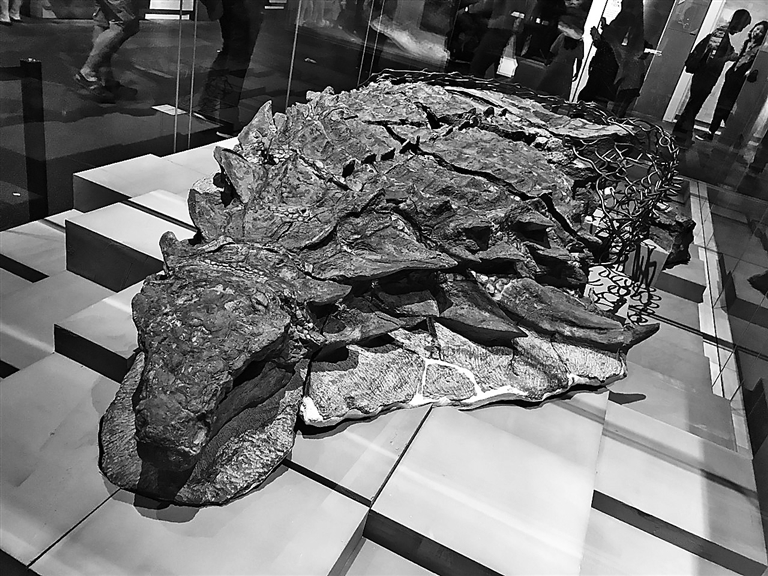
THERE’S only so much we can learn about dinosaurs from their dusty old bones. But recently, palaeontologists from Canada have gathered some fascinating new insights by studying the stomach contents of an incredibly well-preserved nodosaur. They can tell not just what its last meal was, but how it browsed for food and even what time of year it died. The findings come from one of the most impressive dinosaur fossils ever discovered. The 110-million-year-old specimen is a new species named Borealopelta markmitchelli, from the armored ankylosauria group. It was uncovered in 2011 in a mine in Alberta, Canada, preserved in three dimensions and so intact that it still sported skin, scales and stomach contents. “The finding of the actual preserved stomach contents from a dinosaur is extraordinarily rare, and this stomach recovered from the mummified nodosaur by the museum team is by far the best-preserved dinosaur stomach ever found to date,” says Jim Basinger, an author of the study. The researchers peered inside this soccer-ball-sized mass to see what the creature had been eating. Unsurprisingly, this Borealopelta markmitchelli’s last meal was plants — specifically ferns. Around 88 percent of the material was chewed-up fern leaves, and a further seven percent was stems and twigs. The focus on ferns suggested that the dinosaur was a relatively picky eater, given the range of plants known to have been available at the time. That said, the team did find traces of other plants in the stomach, including pollen and spores from moss or liverwort, clubmosses, conifers and flowering plants. Stones were also found in the digestive system, which appeared to be “gastroliths” that are often swallowed by dinosaurs and modern birds to help digest their food. But most fascinating of all are the insights the stomach contents give into the environment around the animal at the time of its death. “There is considerable charcoal in the stomach from burnt plant fragments, indicating that the animal was browsing in a recently burned area and was taking advantage of a recent fire and the flush of ferns that frequently emerges on a burned landscape,” says David Greenwood, an author of the study. It may even be precise enough to determine what time of year the animal died. “We also know that based on how well-preserved both the plant fragments and animal itself are, the animal’s death and burial must have followed shortly after the last meal,” says Caleb Brown, an author of the study. “Plants give us a much better idea of season than animals, and they indicate that the last meal and the animal’s death and burial all happened in the late spring to mid-summer.” The Borealopelta markmitchelli will no doubt continue to be closely studied to see what other secrets it may give up. The fossil is currently on display at the Royal Tyrell Museum in Canada. The research was published in the journal Royal Society Open Science. (SD-Agencies) | 
